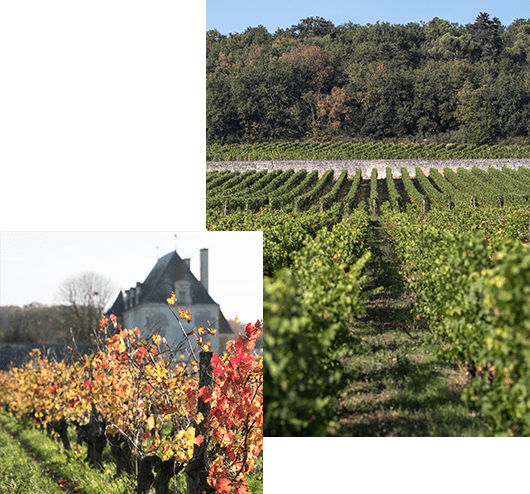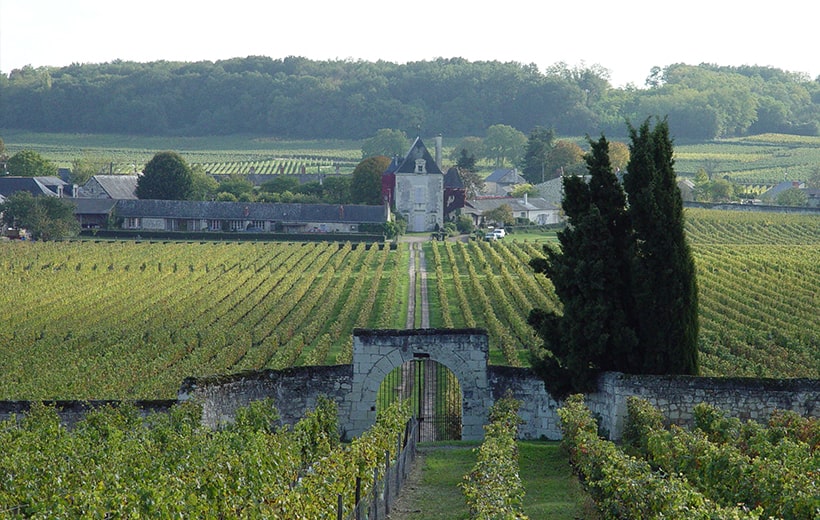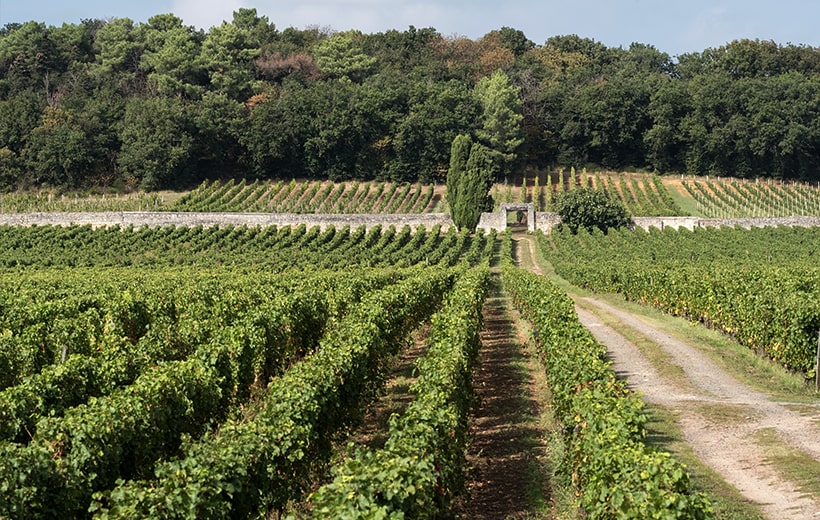Our Soils
A terroir is defined by essential elements. It is made up of all the factors of the vine's ecosystem: soil, subsoil, climate and topography, as well as the human factor. The key elements are as follows:
- The soil must be poor of particular characteristics but balanced. The roots of the vine draw water and nutrients from the soil; the nature of the soil and the trace elements it contains, as well as its water regulation, thus contribute to the taste of the wine and especially to its minerality.
- Climate conditions the growth and maturation of the grapes. All its components are part of the development of the soil: rainfall, winds, sunshine and temperatures.
The key to a terroir is its water balance, generally weakly positive.
- Topography, hillside soils are generally poorer than lowland soils, so the vines are less vigorous, yield lower, but of higher quality.
- Winemaker, its intervention also plays an important role since it determines the choice of cultivated plots, the pruning system, the grape variety, takes care of the soil, chooses the best period for the harvest,... The care taken in the vineyard, the care taken during the harvest, hand harvesting in small open crates, respect for the fruit in the cellar, seeking a balance in the vinifications to achieve an aesthetic pleasure: the wine
- Soil types seem to induce characteristics:
– The siliceous soils promote finesse, subtle and floral notes.
– Clay gives fuller, firmer, powerful and alcoholic wines, aromatic polyphenols.
– Limestone induces roundness, suppleness, mineral, floral and fruity notes.
“
The clays of our terroirs are the main actors of the complexity of our soils.
They have a large internal surface, like the villi in our intestine. The proportion of sand, silt, clay, is variable according to our plots.
The vine feeds in the clay sheets where the ions are found. The surface of the sheets varies between 25 and 800m2 per gram of clay.
The fragrance of the wine comes from carbon compounds due to photosynthesis. The taste of terroir, is induced by metal co-factor enzymes.


In spring the humus will mineralize. The roots will form clay from the humus on a depth of 30cm thanks to the help of the spicy and endogenous fauna.
Wildlife and microbes actively participate in the formation of clays. Tillage is a catalyst for these microorganisms, soil aeration is essential.
This work also allows cold rainwater, rich in oxygen, to infiltrate the soil. This water will provide a very useful supply of oxygen in the spring.
Clay is the main factor in the complexity and quality of our wines.
We know that 28 atoms come from the soil and 3 from the air, in the composition of a wine. The organization of the kingdoms of nature must be well understood and assimilated in order to find our place within the winery.
the mineral
Physical body
the vegetable
Physical body
Etheric body
the animal
Physical body
Etheric body
astral body
the human
Self (degree of consciousness)
astral body (impulse)
etheric body (vegetative)
physical body (material)
“
Our actions on the mineral and the living, as well as our benevolence and altruism, influence the beauty of our wines.




